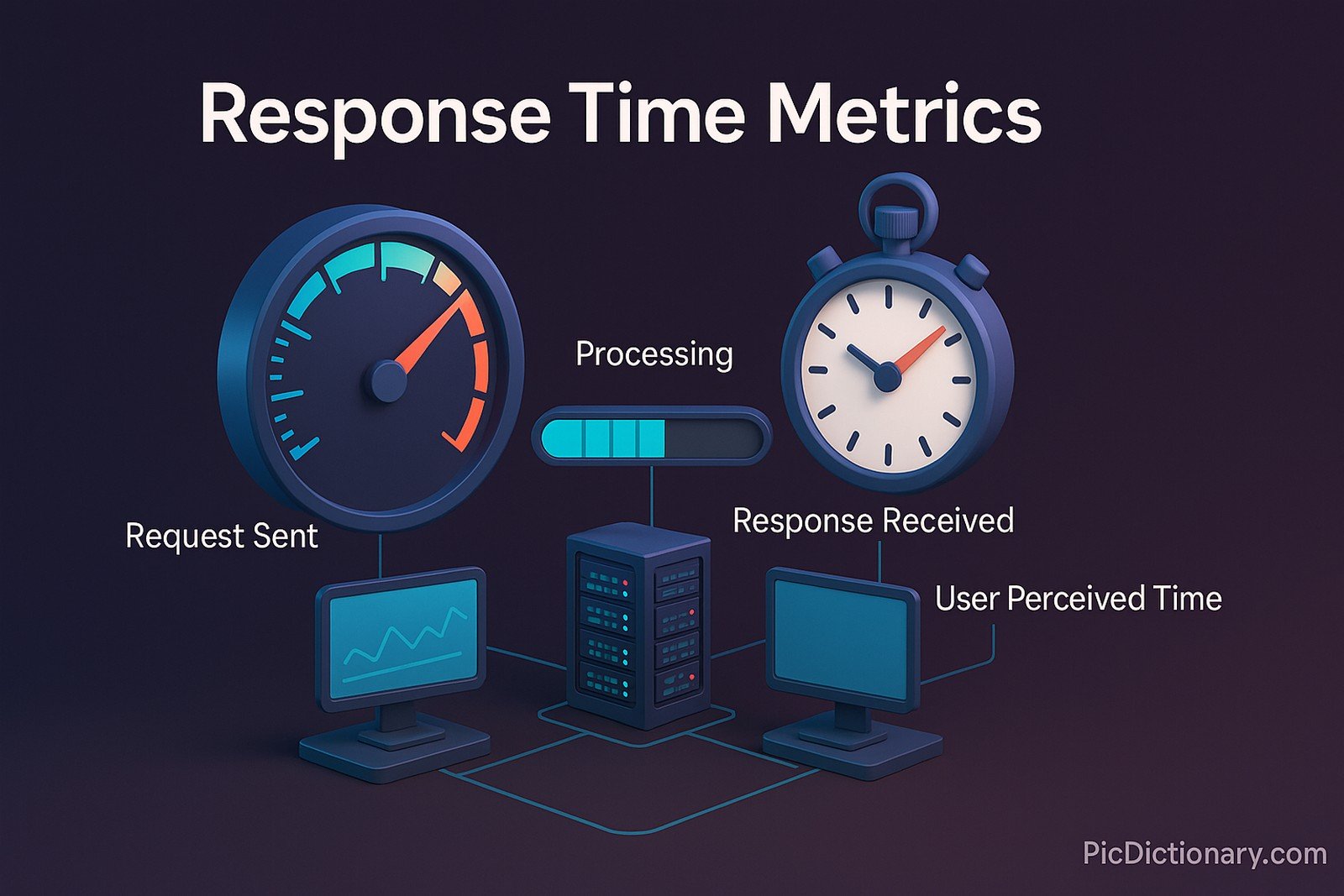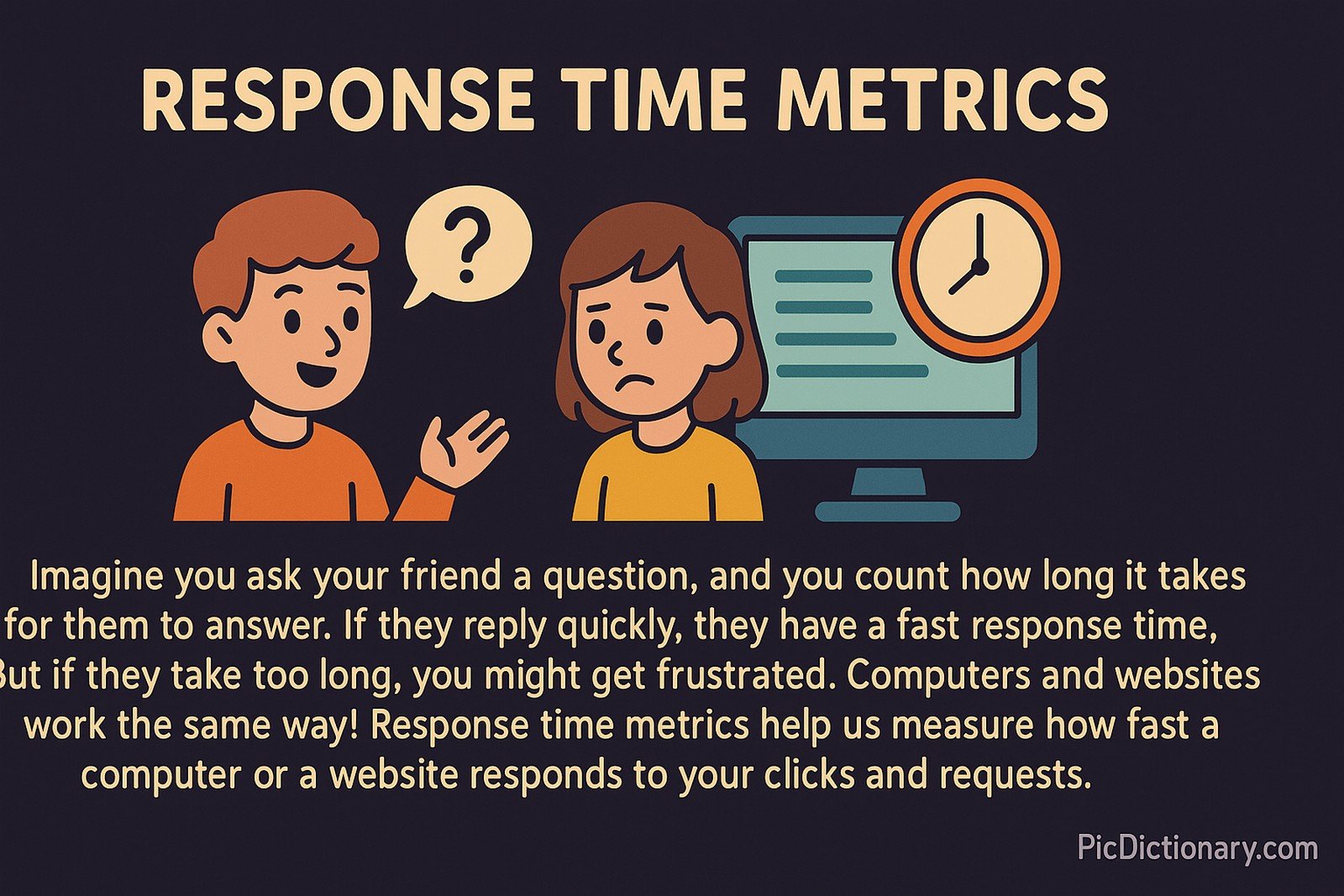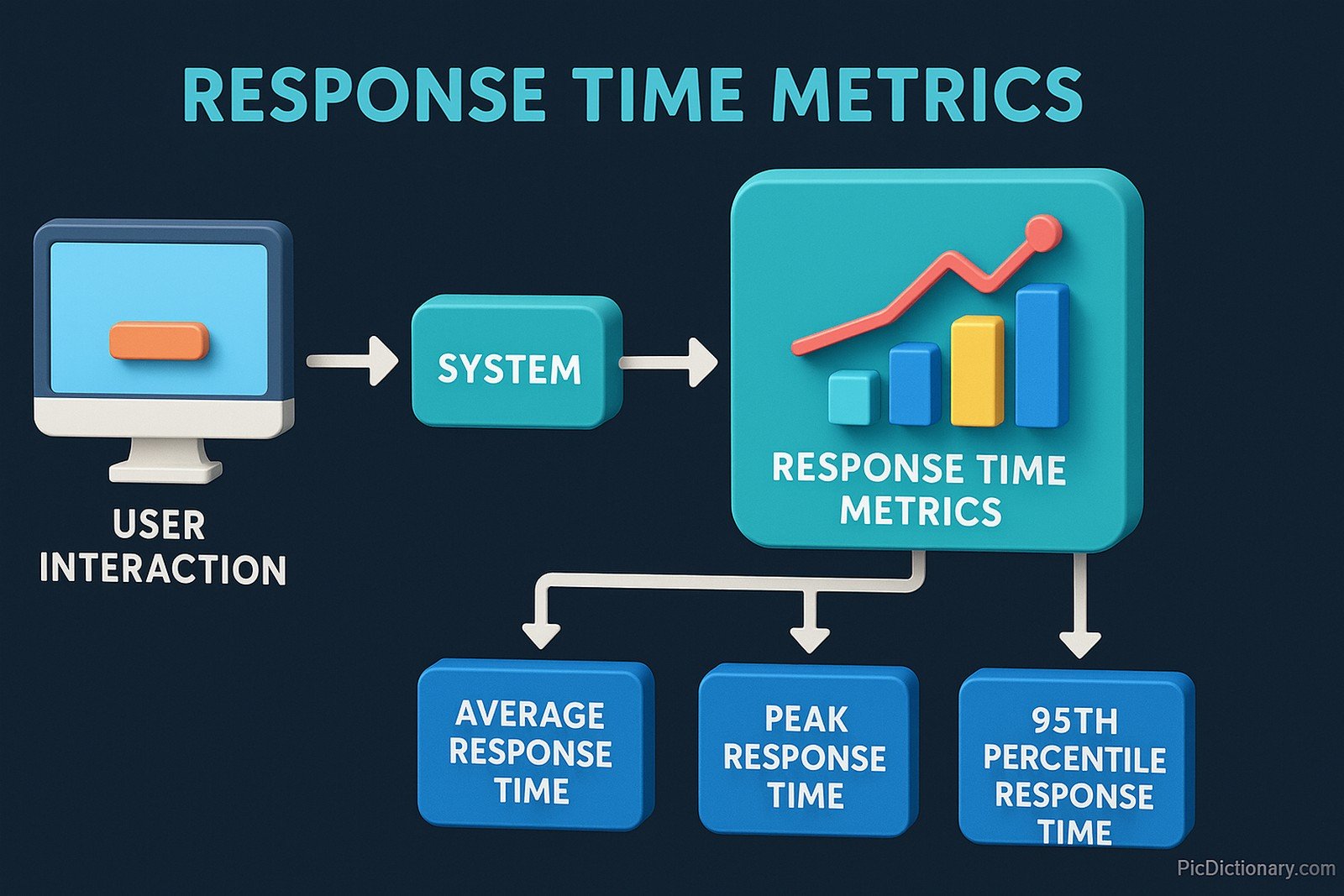Response Time Metrics

Quick Navigation:
- Response Time Metrics Definition
- Response Time Metrics Explained Easy
- Response Time Metrics Origin
- Response Time Metrics Etymology
- Response Time Metrics Usage Trends
- Response Time Metrics Usage
- Response Time Metrics Examples in Context
- Response Time Metrics FAQ
- Response Time Metrics Related Words
Response Time Metrics Definition
Response Time Metrics refer to measurements that quantify the speed at which a computer system, application, or network responds to user interactions or system requests. These metrics are essential in evaluating performance, identifying bottlenecks, and optimizing system efficiency. Common response time metrics include average response time, peak response time, and 95th percentile response time. They are widely used in web development, cloud computing, and IT operations to ensure smooth and fast user experiences.
Response Time Metrics Explained Easy
Imagine you ask your friend a question, and you count how long it takes for them to answer. If they reply quickly, they have a fast response time. But if they take too long, you might get frustrated. Computers and websites work the same way! Response Time Metrics help us measure how fast a computer or a website responds to your clicks and requests.
Response Time Metrics Origin
The concept of response time has been around since the early days of computing when mainframe computers were used in businesses. As computers became more interactive, measuring response time became essential for improving user experience. With the rise of web applications and cloud services, response time metrics have evolved into a critical aspect of system performance evaluation.
Response Time Metrics Etymology
The phrase "Response Time Metrics" is derived from "response time," which refers to the duration between a request and a system’s reply, and "metrics," which denotes measurable values used to assess performance.
Response Time Metrics Usage Trends
With increasing demand for real-time applications, response time metrics have gained more importance across industries. From e-commerce platforms ensuring quick page loads to cloud computing services optimizing resource allocation, response time tracking has become a key performance indicator (KPI). Businesses rely on these metrics to maintain competitive user experiences, particularly in fields like fintech, gaming, and cybersecurity.
Response Time Metrics Usage
- Formal/Technical Tagging:
- System Performance Analysis
- Network Latency Measurement
- Application Performance Monitoring - Typical Collocations:
- "Optimize response time metrics"
- "Measure response time accurately"
- "Improve server response time"
- "Real-time response monitoring"
Response Time Metrics Examples in Context
- A website with poor response time metrics may lose visitors due to slow loading pages.
- Cloud service providers optimize their response time metrics to ensure smooth operation under high traffic loads.
- A game developer monitors response time metrics to reduce lag in online multiplayer gaming.
Response Time Metrics FAQ
- What are Response Time Metrics?
Response Time Metrics measure how fast a system responds to user interactions or system requests. - Why are Response Time Metrics important?
They help ensure that applications, websites, and networks perform efficiently, improving user experience. - What is a good response time for a website?
Ideally, websites should load in under 3 seconds to maintain user engagement. - How do you measure Response Time Metrics?
Tools like Google PageSpeed Insights, Pingdom, and server logs track response times. - What factors affect response time?
Server performance, network latency, and application optimization impact response time. - What is the difference between response time and latency?
Latency is the time taken to send a request, while response time includes processing and delivery. - How can response time be improved?
Optimizing code, using content delivery networks (CDNs), and upgrading servers can reduce response time. - What is the 95th percentile response time metric?
It means 95% of response times are below a specific threshold, helping gauge worst-case performance. - Do response time metrics impact SEO?
Yes, search engines prioritize fast-loading sites in rankings. - Can AI help optimize response time metrics?
Yes, AI-powered monitoring tools can predict and resolve performance bottlenecks.

Response Time Metrics Related Words
- Categories/Topics:
- Performance Monitoring
- Web Optimization
- IT Infrastructure
Did you know?
In 2010, Google announced that page load speed was a ranking factor for search results. This change made response time metrics a crucial consideration for businesses aiming to maintain high SEO rankings. Fast-loading websites not only improve user satisfaction but also reduce bounce rates and increase conversions.
PicDictionary.com is an online dictionary in pictures. If you have questions or suggestions, please reach out to us on WhatsApp or Twitter.Authors | Arjun Vishnu | @ArjunAndVishnu

I am Vishnu. I like AI, Linux, Single Board Computers, and Cloud Computing. I create the web & video content, and I also write for popular websites.
My younger brother, Arjun handles image & video editing. Together, we run a YouTube Channel that's focused on reviewing gadgets and explaining technology.



Comments powered by CComment